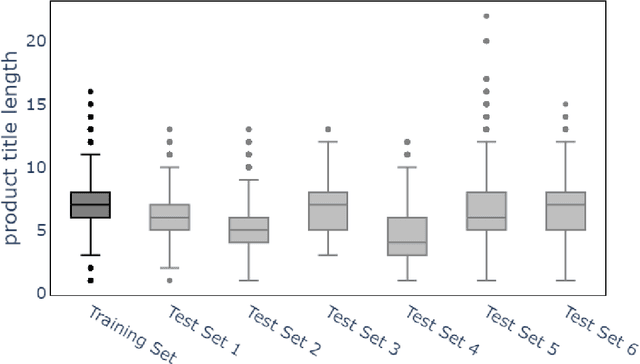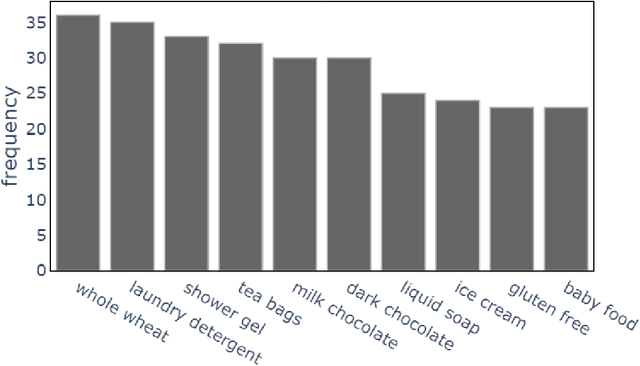Text Classification for Predicting Multi-level Product Categories
Paper and Code
Sep 02, 2021



In an online shopping platform, a detailed classification of the products facilitates user navigation. It also helps online retailers keep track of the price fluctuations in a certain industry or special discounts on a specific product category. Moreover, an automated classification system may help to pinpoint incorrect or subjective categories suggested by an operator. In this study, we focus on product title classification of the grocery products. We perform a comprehensive comparison of six different text classification models to establish a strong baseline for this task, which involves testing both traditional and recent machine learning methods. In our experiments, we investigate the generalizability of the trained models to the products of other online retailers, the dynamic masking of infeasible subcategories for pretrained language models, and the benefits of incorporating product titles in multiple languages. Our numerical results indicate that dynamic masking of subcategories is effective in improving prediction accuracy. In addition, we observe that using bilingual product titles is generally beneficial, and neural network-based models perform significantly better than SVM and XGBoost models. Lastly, we investigate the reasons for the misclassified products and propose future research directions to further enhance the prediction models.
 Add to Chrome
Add to Chrome Add to Firefox
Add to Firefox Add to Edge
Add to Edge